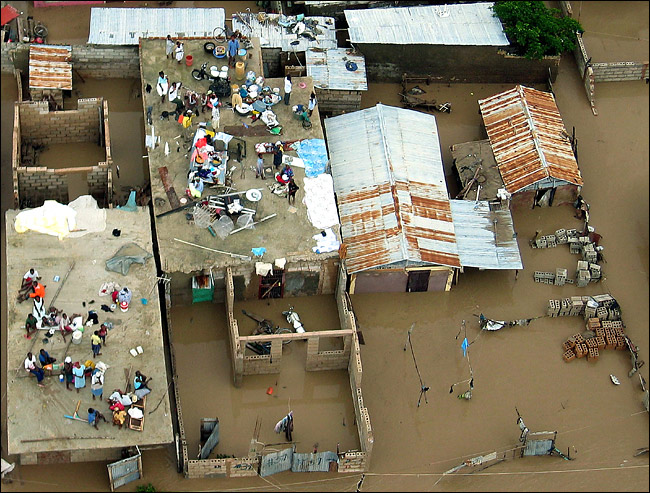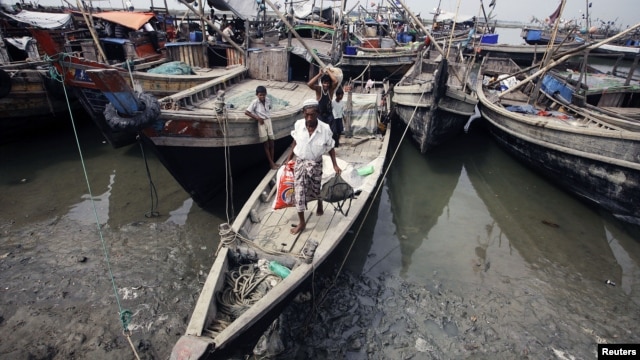Zimbabwean youth continue to leave their country for seemingly greener pastures in South Africa. Many of them illegally enter the neighbouring country, where they are threatened by gang violence, human trafficking and, ultimately, deportation. However, some border-jumping Zimbabweans face an even more gruesome deadly risk before reaching the other side: the crocodiles of the Limpopo River.
One day this past June, when the river waters were still high, 27-year-old Thulani Sibanda and two former classmates met up in their village of Ntumbamayi, in the northern province of Matabeleland. Their plan was to travel to South Africa to look for jobs. Leaving home and heading to South Africa has long been a tradition among the Ndebele people of western Zimbabwe. Plus, if you're a youth but you have never worked in South Africa, you are not considered a man.
So Thulani and his friends agreed that now was their time to head to the Rainbow Nation. Because none had passports, the three planned to enter illegally. And that meant having to use a dangerous form of entry: jumping the Limpopo River that separates Zimbabwe and South Africa.
Border jumpers
It's bad enough that gangs present a threat to border jumpers who reach the other side and that the females among them are vulnerable to rape. But that's not what gave the Limpopo its nickname. The River of Death, it is called, because so many people who try to cross these waters have been killed by vicious crocodiles.
According to police on both sides, the reptiles are responsible for the deaths of hundreds of young people trying to enter South Africa illegally. Zimbabwe police in the border town of Beitbridge have long warned youth to stop risking their lives by crossing the Limpopo. Yet the river offers the only real option for jumpers; it's close to the checkpoint and provides easy access to collection points on the other side, where human traffickers can pick up the migrants and, for a fee, transport them to Johannesburg.
Lucky charms?
Before boarding a bus from Bulawayo to Beitbridge, the three youth visited a sangoma, a traditional healer. Friends of theirs who had managed to cross the river without incident had told them about a sangoma protection ritual, which cost 200 South African rand (about 18 euro).
Thulani says the healer gave them a charm potion, a muti, as traditional medicine is called in Ndebele, that was mixed with crocodile blood and dried leaves. "The sangoma told us the charms were to protect us from crocodiles, and we believed him," he recalls.
The Limpopo River crocodiles are among the world's largest and arguably the most dangerous. Experts say saltwater crocodiles are responsible for more human fatalities per year than any other predator. They are strong swimmers that are well adapted to the water, which is where they do nearly all their hunting.
The youth were told to wear the charms around their heads, like necklaces, and smear their bodies and faces with the blood before crossing the river. Thulani says he used the charms, but was - to say the least - disappointed.
Taking the plunge
Thulani and his classmates waited until it was dark. At that point, guards don't usually patrol areas along the fence and some guards get dismissed as others reported for duty.
"When we got to the river, we met others who were also trying to cross into South Africa," Thulani tells RNW, referring to the other border jumpers he met from different districts of Matabeleland. "My two friends decided we cross with them, but I chose to wait for them to go first and then follow if there is no danger."
Usually, the crocodiles lie by the river's banks and spring into action when they see people or animals jumping into the water. According to Thulani, when the group of jumpers reached a deep part in the river, sure enough, crocodiles appeared from nowhere. Stunned, the young man could not get a good look at just how many there were.
"I watched in horror as the crocodiles grabbed the youths and threw them deeper into the waters," Thulani recalls.
Shock silenced the victims, who did not even scream, he says. In the water, the youth were no match for the crocodiles of the Limpopo River. Thulani's classmates were among those killed.
That day
In shock himself, Thulani retreated from the river and went straight to the Beitbridge police camp, where he filed a report of the attacks.
Two days later, after a joint search by Zimbabwe and South Africa police, some remains of his friends and other youth were discovered on the banks of the Limpopo.
"I will never forget that day," says Thulani. "The images keep coming back to me, especially when I close my eyes at night."
The young man has since applied for a passport and successfully reached South Africa. Here in Johannesburg, he is still looking for employment, though feels confident he will find something before Christmas.
Wednesday 14 november 2012
http://allafrica.com/stories/201211140669.html?page=2
 A helicopter carrying victims of a car accident to a hospital in northeastern Iran crashed on Wednesday and all 10 people on board died, state TV said.
A helicopter carrying victims of a car accident to a hospital in northeastern Iran crashed on Wednesday and all 10 people on board died, state TV said. 



